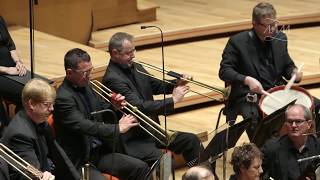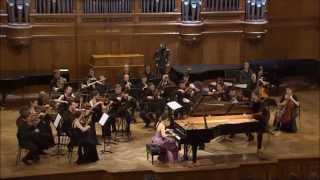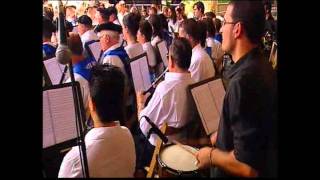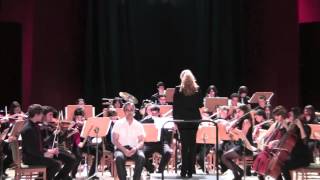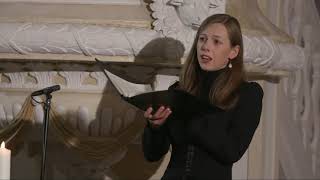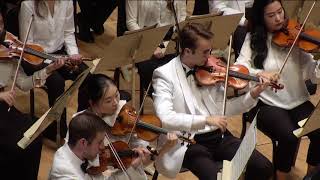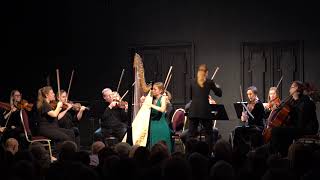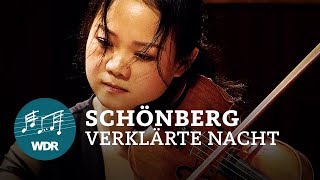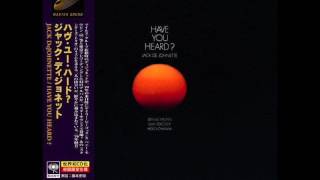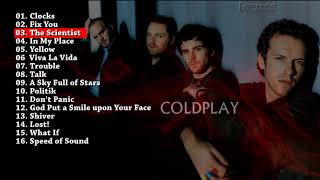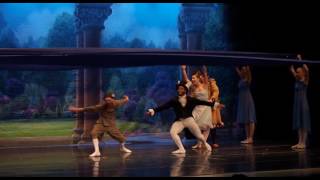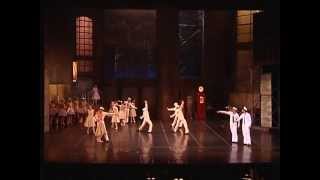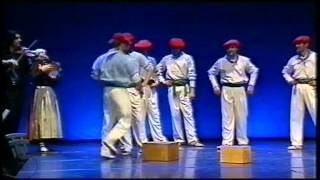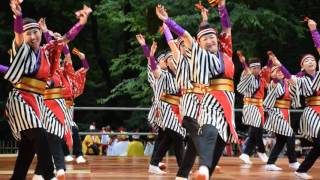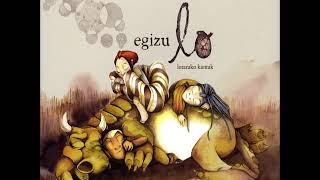Recommended music videos for initiation to classical music
Georg Friedrich Handel ( 1685-1759) was born in Halle , Germany; Naturalized English, he is one of the leading figures in the History of Music and, of course, of the Baroque . Of his abundant musical production, we must highlight the Oratorio El Mesías , one of the masterpieces of History . As a child he began taking harmony and counterpoint classes from Friedrich Zachow , organist from Halle , with whom he also learned to play the oboe, violin and organ. At the age of 18 he moved to Hamburg where he wrote his first two operas. After three years he traveled to Florence and then to Rome . In 1710 he returned to Germany and from there to London where he settled for life. Despite the total silence with which he protected his privacy, his homosexuality seems clear. He died at the age of 74 at his home.
The catalog of the works of Georg Friedrich Händel , which is known by the acronym HWV and means Handel Werke Verzeichnis (in German, Catalog of Handel's Works) is not ordered chronologically but thematically, by type of genre work and according to its vocal nature. or instrumental. It covers 612 works plus 25 supplements and doubtful and lost works, being prepared between 1978 and 1986 in three volumes. The exact number of compositions is therefore difficult to specify. Its author is the musicologist Bernd Baselt .
Music for the Royal Fireworks HWV 351 or Fireworks Music is an orchestral composition by Georg Friedrich Händel from 1749. It was commissioned by George II of Great Britain to accompany the fireworks that took place on Green Park, London , on 27 April 1749. The occasion was the celebration of the end of the War of the Austrian Succession and the signing of the Treaty of Aachen . The work is articulated in five movements, of which today we offer the last two: IV The Jubilee and V Minuet in the version of the Academy of Ancient Music conducted by its owner, the British master Richard Egarr.
Wolfgang Amadeus Mozart (1756-1791) is considered one of the three giants of musical composition along with Bach and Beethoven . Child prodigy born in Salzburg (Austria), at the age of six he mastered the keyboard and violin and began to compose. His father, Leopold, showed him off on exhausting tours of different European courts. Prolific composer (more than 600 works written from the time he was five years old until his death) he cultivated all types of musical genres: piano works, chamber music, symphonies, concert works, choral works, operas... each and every one of them, masterpieces of its gender. His operas The Magic Flute, Don Giovanni, Cosí fan Tutte, and The Marriage of Figaro are among the 10 most performed operas in the world. He died in Vienna at the age of 35.
The catalog of Mozart's works or Köchel Catalog ( Köchel Verzeichnis, in German) was created by Ludwig von Köchel in 1862 and lists the musical works composed by Wolfgang Amadeus Mozart . Each of Mozart 's works is designated by a number preceded by the abbreviation K. or KV ; number that designates the chronological order of its creation and that is actually valid for most of the works, although some works by other authors appear erroneously attributed to Mozart , and omits other authentic ones that had not yet been discovered.
The Piano Concerto No. 21 in C major, K. 467, by Wolfgang Amadeus Mozart was completed on March 9, 1785 and premiered a day later at the Imperial and Royal Court Theater in Vienna , in a concert promoted by Mozart himself. This is one of the composer's most popular piano concertos and is structured in three movements, of which today we offer the second, ANDANTE IN F MAJOR, which begins with a figuration of triplets in the bass supporting a languid melody. After a calm exposition by the orchestra, the soloist takes up the melody with the ensemble. There are brief moments of "sadness", but overall the tone of the movement is bright and calm.
Today's version is offered to us by the Korean pianist Yeol Eum Son.
Xabier Zabala. He began his career as a performing musician and soon his charisma as a composer stood out, making compositions, arrangements and soundtracks for more than 20 years. Noted for his musical arrangements for different groups, orchestras and bands, where we can highlight those made for the rock group Barricada, the Euskadi Symphony Orchestra and the Bilbao Symphony Orchestra and as a special mention to the arrangements made for the discography of the work " Txistu Symphonic ". Compositions for films such as Ilargiaren Secretua or Parking , the official music of the 61st Edition of the San Sebastian International Film Festival or the already widespread and famous song " Maite Zaitut " composed for the clowns Pirritx, Porrotx and Marimototx , make this career multidisciplinary in an experienced and emblematic professional who regularly participates both in teaching activities and in the press, without leaving aside his creative activity. (Extracted from Webnode page)
Today we offer the arrangement made by Xabier Zabala to the popular melody “Andre Madalen” in the version offered in the txistularis display of the Semana Grande de Bilbao with Gorka Zabaleta as soloist.
Albert William Ketèlbey (1875-1959) was an English composer, conductor and pianist. He was born in Birmingham (England) and was the son of George Ketelbey and Sarah Aston . At the age of eleven he wrote a piano sonata which he performed in the presence of Edward Elgar . After studying for a time at the Milland Institute School of Music and at the Fitzroy in London , he obtained a scholarship to study at the Trinity College of Music in this city, where he showed his great talent for playing various orchestral instruments. As director of London's Vaudeville Theatre , he continued to write vocal and instrumental music. Later, he became famous and many of his songs were used as accompaniment to films and as background music in dance halls.
In the Mystic Land of Egypt is a piece of light classical music for orchestra and optional voices composed by Albert Ketèlbey in 1931. The piece was published by Bosworth the same year, also in piano versions. A synopsis of scenes by the composer mentions that the first native soldiers pass through a village, followed by a soft song sung from a boat on the Nile . Then the orchestra repeats the song and finally the returning soldiers do too.
Today we offer it to you in the version of the tenor Elías Plaza and the Symphony Orchestra of the Municipal School of Music of Las Rozas conducted by teacher Mercedes Olmeda.
Recommended classical music videos
Johann Sebastian Bach (1685-1750) was a German violinist, organist, conductor and composer; He was born in Eisenach into the most prominent musical family in history with more than 30 famous composers within it. In 1703 he obtained his first job as a court musician for the Prince of Arndstat and in 1707 he moved to Mülhausen as an organist, where he married his cousin Maria Barbara with whom he had seven children. After the death of his wife in 1720, he remarried after a year and a half to María Magdalena with whom he would have another thirteen children. In 1723 he moved to Leipzig where he would reside until his death at the age of 65. A prolific composer, he is considered one of the main three geniuses in the History of Music along with Mozart and Beethoven.
The catalog of Bach's works or Bach-Werke-Verzeichnis , better known by its acronym BWV , consists of a numbered index of all of the composer's works arranged thematically by type of genre work and according to its vocal or instrumental nature and used by scholars and musicians around the world. This catalog was created in 1950 by the German musicologist Wolfgang Schmieder .
Tilge, Höchster, meine Sinen , BWV 1083, is a church cantata by Johann Sebastian Bach . The composition is a 1740s adaptation of Giovanni Battista Pergolesi 's Stabat Mater , written in 1736. Bach used an adaptation of Psalm 51 by an unknown author as the new text. Although Bach called the work a motet , it is a psalm cantata for soprano and alto, strings, and basso continuo. The composition was first published in 1962 by Hänssler Verlag , which also published in 1989 a critical edition, based on Bach 's performance material that was later discovered and later passed into the possession of Carus-Verlag . In 2000, the cantata was also published as part of the New Bach Edition .
Today it is offered to us by Kathrin Lorenzen , soprano, and Elvira Bill , alto, accompanied by the Bach Collegium Saarbrücken .
Franz Joseph Haydn (1732-1809), Austrian composer whose brother Michael Haydn was also a notable composer, was one of the main pillars on which classicism was based (1750-1810). At six years of age he began his studies of harpsichord and violin. At the age of eight he was admitted as a choralist at St. Stephen's Cathedral in Vienna where he continued his musical studies. After changing his voice, he had to survive by working multiple jobs, while studying composition analyzing the works of Carl Philipp Emanuel Bach . He maintained a close friendship with Mozart and was Beethoven 's teacher. He laid the main foundations of the sonata form and the formal structure of the string quartet and the symphony. He died at the age of 77 in Vienna .
The catalog of Haydn's works . The works of Joseph Haydn are today classified according to the system created by Anthony van Hoboken and revised and completed by Robbins Landon and his wife Christa , which has been universally adopted, although it is now known that it does not accurately reflect the chronology and composition of the works. works, criteria used by Hoboken in the catalog. Each work is identified with a Roman numeral that corresponds to the category, which in most cases corresponds to a genre. Some categories have subdivisions, which are indicated with a lowercase letter and then an Arabic number appears that corresponds to the order of the specific work within the category. These figures are preceded by the word Hoboken (in memory of the catalog's author) and sometimes by Hob .
Symphony No. 97, Hoboken I/97 , is the fifth of the twelve symphonies called the London Symphonies (numbers 93-104) composed by Joseph Haydn . It was completed in 1792 as part of the series of symphonies composed on his first trip to London. Its premiere took place in the Hanover Square Rooms in London on May 3 or 4, 1792. It was first published in England and spread across the continent in the following years.
Structure . It is written in the usual four-movement form: I (0´03´´) ADAGIO – (1´04´´) VIVACE, 3/4 .-. II (8´34´´) ADAGIO MA NON TROPPO, 2/2 IN F MAJOR .-. III (17´20´´) MENUETTO AND TRIO. ALLEGRETTO, 3/4 .-. IV (21'33'') FINALE: PRESTO ASSAI, 2/4.
Today's version is brought to us by the Tanglewood Music Center Orchestra conducted by Andris Nelsons .
Claude Debussy (1862-1918) was a French composer considered the first composer of Impressionism . In 1884, with the cantata L'enfant prodigue he won France 's most prestigious musical award, the Prix de Rome . Back in Paris , he was impressed by Wagner 's opera Tristan und Isolde , “the best thing I have ever heard.” Later he would be influenced by the structures of Javanese music, by the harmonic freedom of Rimski-Korsakov and by Erik Satie , similar to his approaches. In 1894 he premiered his Prélude à l'après-midi d'un faune ; Four years later he achieved international fame with his only completed opera Pelléas et Mélisande ; He was then 37 years old. Today, Debussy is considered one of the most important composers of the 20th century .
Danses Sacrée et Profane , a work by Debussy that we suggest today, was commissioned by the Pleyel house to promote their new instrument, the harp; The work, written for harp and string orchestra, was premiered in 1904 when Debussy 's prestige was well established. Although the sacred dance (0'7'') and the profane dance (4'40'') are two contrasting dances, there is no pause between them and for some critics they come to symbolize the unity of the body with the body. soul.
Today we can see it performed by the harpist Aiste Baliunyte and the director Giedre Slekyte , both Lithuanian artists.
Arnold Schönberg (1874-1951) was an Austrian composer and musical theorist, recognized as one of the first composers to delve into atonal composition , and especially for the creation of the technique of dodecaphonism based on series of twelve notes, opening the door to the subsequent development of serialism in the second half of the 20th century . In addition, he was the leader of the so-called Second Vienna School . His musical career began early: at the age of nine he was already a self-taught violinist and composer.
After the death of his father, in 1889, he was forced to take care of the well-being of his family and began to work as an apprentice bank employee, investing part of his salary in numerous opera performances and, of all, in those of Richard Wagner . He owes his training as a composer, above all, to the study of the works of Johannes Brahms, Richard Wagner, Gustav Mahler, Johann Sebastian Bach and Wolfgang Amadeus Mozart and it was in this way that starting from Wagnerian chromaticism is how he would reach his climax, until he disintegrated. the system and create a new one, based on very different rules.
Catalog of Schoenberg's works . His works are classified by their Opus number ( from the Latin opus 'work'), which is a term used in music to catalog the works of most composers. Since the 17th century , this form of cataloging began to be used every time a work was published, preceding the word Opus , or its abbreviation Op ., to its order number.
Verklärte Nacht (Transfigured Night) Op. 4 is a string sextet in one movement by Arnold Schönberg written in 1899, considered his first major work. He was inspired by the poem of the same name by Richard Dehmel – in addition to the great inspiration that came from meeting Mathilde von Zemlinsky (the sister of his teacher Alexander von Zemlinsky), with whom he would later marry. Schönberg composed this complex and passionate sextet three weeks after meeting Mathilde .
Structure . The single movement of the sextet consists of five sections that correspond to the structure of the poem on which it is based, and the themes of each section constitute a true musical metamorphosis of the poem's narrative and discourse. I (2:21) SEHR LANGSAM (VERY SLOW) .-. II (9:00) BREITER (WIDEER) .-. III (14:08) SCHWER BETONT (STRONG EMPHASIS) .-. IV (17:38) SEHR BREIT UND LANGSAM (VERY WIDE AND SLOW) .-. V (27:30) SEHR RUHIG (VERY QUIET)
Recommended music videos for all tastes
Jack DeJohnette (Chicago, 1942) is a jazz drummer; He is also a pianist and composer. He becomes known as a member of Charles Lloyd 's band, a group that includes pianist Keith Jarrett . After recording two albums with Jackie McLean , Herbie Hancock, Joe Henderson, and Bill Evans , in 1968, he joined Miles Davis ' band (1969 to 1972). During his time with Davis, he also recorded albums with Wayne Shorter, Chick Corea, Lee Konitz, Miroslav Vitous and Freddie Hubbard , among many others. Leaving Davis ' band, he recorded with artists such as Sonny Rollins, Stanley Turrentine, Keith Jarrett, Cannonball Adderley and McCoy Tyner .
Pink (1979) is an American singer, songwriter, dancer, acrobat and actress. He rose to fame when he released the single There You Go in April 2000, which reached No. 7 on the Billboard Top 100 . Recognized for her distinctive, raspy voice and acrobatic stage presence, she was ranked by Billboard as the 13th on its list of most influential artists of the 2000s and the No. 1 pop song artist of that decade. Pink has sold 40 million records and 50 million singles around the world, making her one of the best-selling singers. He has scored fifteen top 10 hits on the Billboard Hot 100 in the USA , including eleven as a solo artist, and has won three Grammy Awards , six MTV Video Music Awards and two Brit Awards .
Coldplay is a British pop rock and alternative rock band founded in 1996. Since then, they have sold more than 100 million records worldwide. In 2003, MTV2 named them the second "best band of the new millennium" behind Oasis . In 2009, readers of Rolling Stone magazine voted the group as the "fourth best artist of the 2000s" and Q magazine included them on its list of Artists of the Century . Three of their eight albums have been chosen among the 50 best British albums; They are also among the top 60 best-sellers of all time in the United Kingdom . They have been an active advocacy group for various political and social causes such as the Oxfam Make Trade Fair campaign, Amnesty International and ClientEarth . They donate 10% of their income to social aid.
Ana Gabriel (1955), daughter of Ramón Araujo Valenzuela and Isabel Yong , is a Mexican singer-songwriter and businesswoman, called the Diva of America and the Moon of America ; She has 49 years of experience with popular songs of her authorship such as "Simply Friends", "Who Like You" and "No Te Quiero. She has received 13 awards such as Lo Nuestro, Billboard and Latin Grammys , among others. She is also a winner of various diamond records, gold records and platinum records. He has recorded duets with artists such as Armando Manzanero, Pedro Fernández, Yuri, Plácido Domingo, José Feliciano, Jon Secada, Rocío Jurado, Vicky Carr, Vicente Fernández, Juan Gabriel, Albita, Marc Antony, José Luis Perales among others.
Recommended peculiar videos
Piotr Tchaikovsky (1840-1893) was a Russian composer who graduated from the Saint Petersburg Conservatory and wrote works of different genres, although where he achieved the greatest success was with his ballets. In 1859 he obtained a civil servant position in the Ministry of Justice , which he would leave after three years to be able to dedicate himself only to music. His personal life was plagued by continuous crises since the death of his mother and his repressed homosexuality, which forced him to enter into a marriage that only lasted a few months. He wrote more than 150 compositions, including works for piano, quartets, suites, symphonies, concertos, choirs, cantatas, operas and ballets. He died at the age of 53 and is considered one of the greatest composers in history.
Alice In Wonderland , commissioned by English National Ballet , is Carl Davis 's arrangement of Tchaikovsky 's music for a ballet about Lewis Carroll 's beloved children's novels. Davis is not the first composer to take this approach, as, at first glance, Stravinsky took the same approach in The Fairy's Kiss , although this is inevitably a harsh comparison. Alice may be an evening of harmless ballet fun, of which this would be a good reminder, but without the visual element, Davis 's offering struggles for coherence.
Tchaikovsky 's unbridled passions often seem out of place with the idiosyncratic charms of Carroll 's story. There are charming touches, particularly the sly playing of the Cheshire Cat, but the inclusion of movements such as the Waltz from the Fifth Symphony , its theme of fate, an unwanted intruder at the tea party, make it difficult to perceive this as a works in its own right. ( Christopher Dingle writes in BBC Music)
Today it is offered to us by the Dance Corps of the New York State Ballet .
Coppélia is a sentimental and comic ballet, in three acts, with original choreography by Arthur Saint-Léon to a ballet libretto by Saint-Léon and Charles Nuitter and music by Léo Delibes . It is based on a macabre story by ETA Hoffmann titled Der Sandmann (The Sandman). The story is about a mysterious inventor, Doctor Coppélius who has a life-sized dancing doll. It seems so real that Franz , a villager, falls in love with her, leaving aside his true love, Swanilde , who in Act II shows him her madness, by dressing like a doll and pretending to come to life. Today we offer the first act of Coppelia with Oksana Kucheruk and Igor Yebra as stars accompanied by the Bordeaux Opera Ballet .
Argia Dantza Taldea is a Basque dance group from San Sebastian made up of about 45 members directed by Juan Antonio Urbeltz (1940); It has collected “in situ” abundant dances from the Basque Country grouped in cycles in which the authenticity of the choreographic, musical and instrumental versions, and even costumes, has taken precedence. At the 1968 Middlesbrough International Folklore Festival (England) he won first prize for dance among 28 groups from 22 nations. In 1998, the Alfred Toepfer Foundation of Hamburg awarded him the European Prize for Popular Art . In 2003 he presented the show Pas de Basque anchored in Basque tradition, but with a contemporary dynamic; Today we offer part of this show.
Almute dantza , also known as Saskito dantza or Xarmanta , is a dance typical of the Baztan repertoire, which has not been danced exclusively in Baztán ; In fact, we can also find testimonies of it in Gipuzkoa, Lapurdi and Baja Navarra . The Saskito or almute (almud) is a small box with a square base, which was used to measure cereal (corn, wheat, barley) and which has been used as a pretext for dance, for a dance-game. To do this, it was placed face down, so that the dantzari could dance on it; To the beat of the music, the dantzari must make small jumps on the bushel, keeping the other foot in the air. As the melody progresses, the dantzari must change the foot on which he performs the jumps. (Text extracted from Auñamendi Eusko Entziklopedia)
The origins of Traditional Japanese Dances date back to the ceremonial dances that were performed for the Court , to the dances of popular festivals and the Ennen , which are Buddhist dances. Furthermore, Japanese Kabuki theater is closely linked to these traditional dances , since both leave aside everything superficial and follow the Buddhist philosophy of “bringing the soul closer to heaven.” Traditional Japanese dances consist of slow movements of dancers who remain firm and solid on the ground, moving their feet in short steps with their legs bent. Head movements also play an important role, as they convey the energy and expression of the Japanese spirit.
Meiji Jingu is a Shinto shrine dedicated to the deified spirits of Emperor Meiji and his wife, Empress Shōken . located in Shibuya (Tokyo).
After the emperor's death in 1912, Japan's National Assembly passed a resolution that wanted to commemorate his role in the Meiji Restoration . A lily field in an area of Tokyo that Emperor Meiji and Empress Shōken were accustomed to visiting was chosen as the final location. Construction began in 1915 and was completed in 1921. The video we present today offers traditional folk dances that celebrate the Emperor 's birthday. This is a rare event that hosts several groups performing on stage during the Fall Festival .
Recommended music videos for children
Various Wikipedia articles have been used to write these texts.
The texts of Videomusicalis are written in Basque, Spanish and English.





